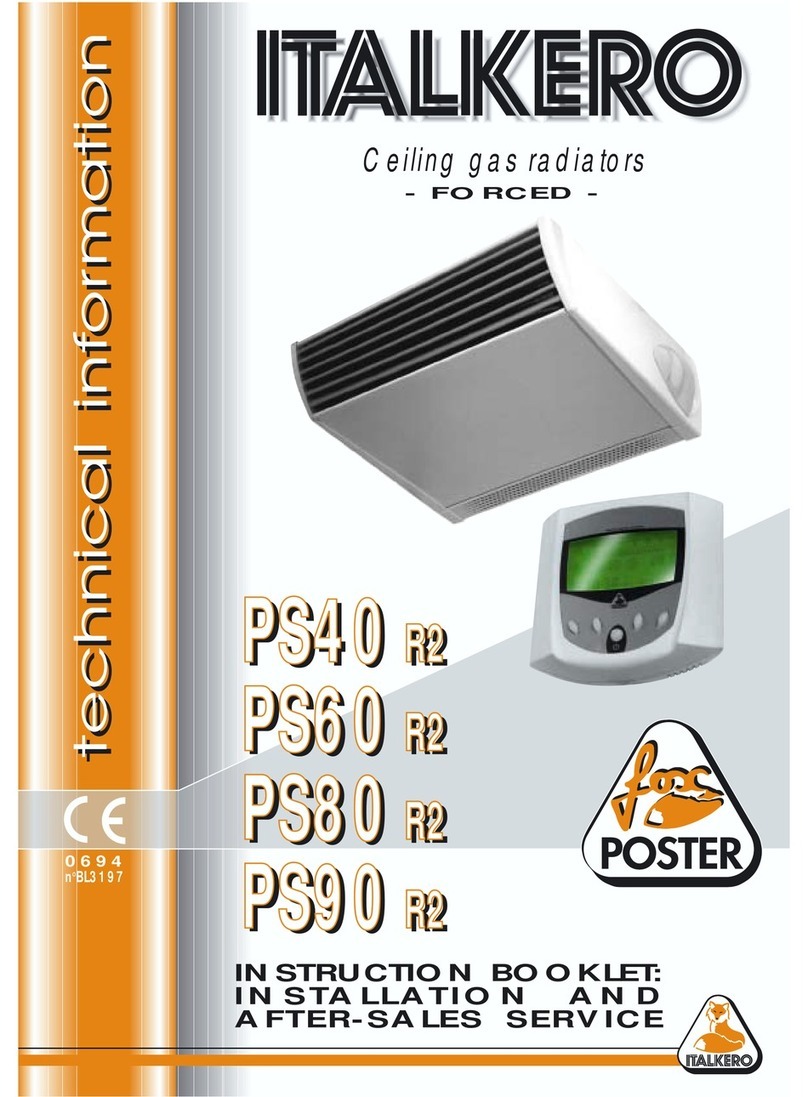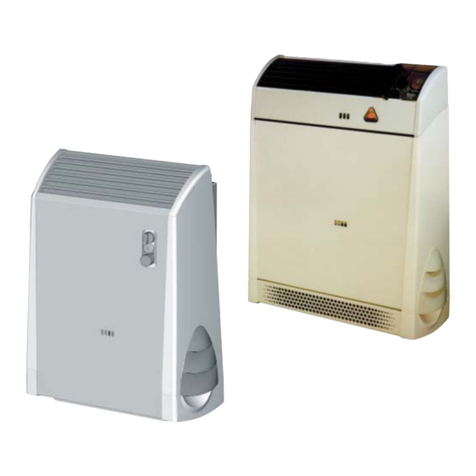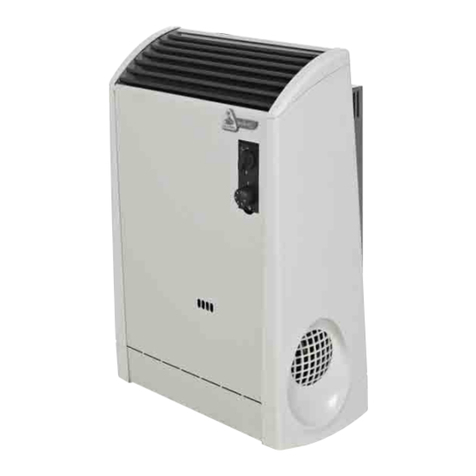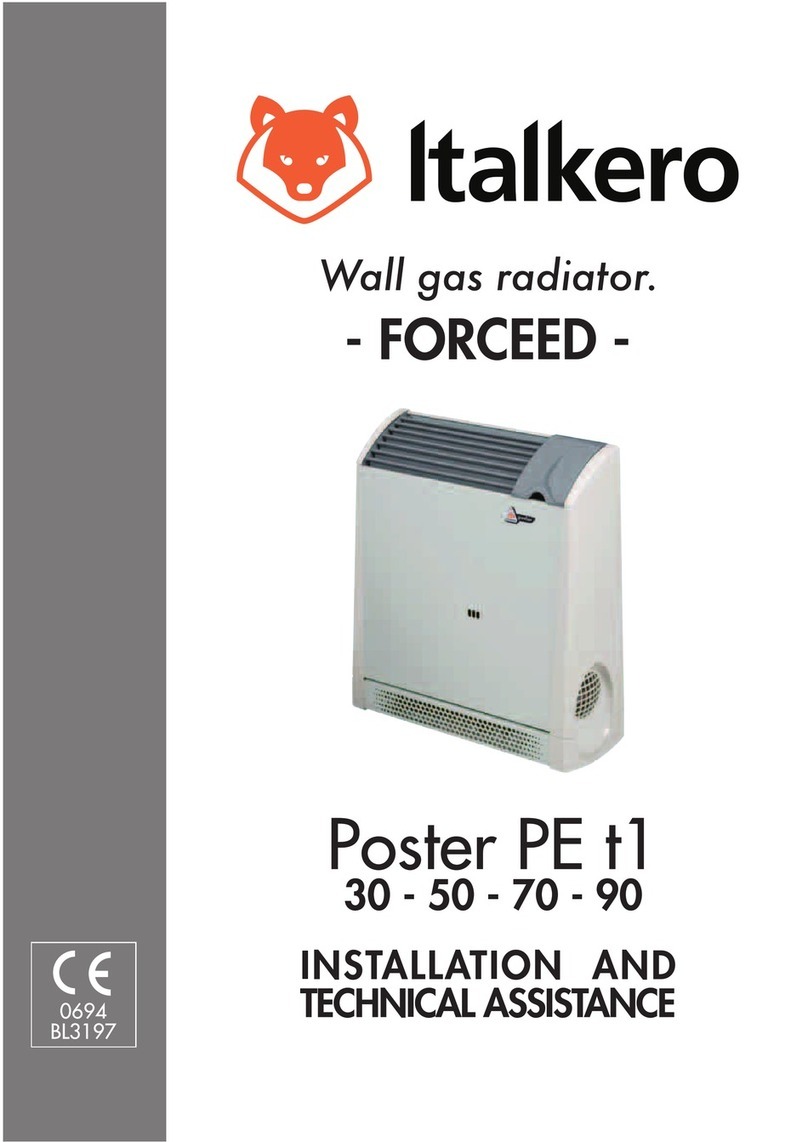We like to remember that, products that use combustion
or electrical energy there is security rule to observe
before operating.
Do not allow children to be near the appliance.
It is prohibited to turn on an electrical device if there
is a gas smell.
In this case:
- Open windows and door.
- Close the gas tap.
- Call a Technical Service Assistance.
It is prohibited to touch the appliance with wet hand
or other parts of your body.
-Electrical Hazard: Do not touch the appliance with
wet feet or other part of your body.
It is prohibited to clean the appliance when it is run-
ning.
It is prohibited to pull, remove and wring electric
wires outside the appliance also if the electrical
supply is turned off.
It is prohibited place over the appliance, towels, tea
clothes and other could be cause of inefficiency or
also source of hazard.
It is prohibited to leave paper, plastic, or other things
of the appliance box outside within a childʼs reach.
After removing the packaging, check the integrity of
the contents. In case of discrepancies, contact the
Agency that sold the appliance.
The appliance must be installed by an authorised
company pursuant to Law no. 46 dated 5 March
1990. After installation, such company should issue
the owner with a declaration of conformity of proper
installation, according to current national regulations
and any local regulations pursuant to Art. 17 of law
no. 46/90 and the instructions provided by the
Manufacturer in the installer's booklet that accompa-
nies the product.
The appliance must be used as intended by the
Manufacturer and for the purpose for which it was
expressly built.
The Manufacturer disclaims any contractual and
non-contractual liability for injury to persons and ani-
mals and damage to things caused by installation,
adjustment and maintenance errors or improper
appliance use.
If the appliance is not used for a long period of time,
the following operations will have to be performed:
- position the master switch of the appliance on
"OFF"
- position the master switch of the system, if fitted, on
"OFF" or disconnect the plug from the power socket.
- close the gas tap
The appliance should be serviced at least once a
year.
This booklet is an integral part of the appliance and
must therefore be carefully looked after and
ALWAYS accompany the appliance, including when
this is sold to another user or transferred to another
system.
In case of damage or loss, ask the Area After Sales
service of the Manufacturer for another copy.
Always make sure that curtains or other objects do
not obstruct the suction filter and the room air outlet
vent.
Only connect the appliance to properly earthed
power sockets.
Only install the appliance in dry environments (pro-
tection IP 20)
The appliance must not be operated wherever there
are hazardous materials, vapours or liquids.
Install the appliance on a flat surface to prevent any
malfunction.
5
GENERAL
GENERAL INFORMATIONS
SAFETY RULES
































